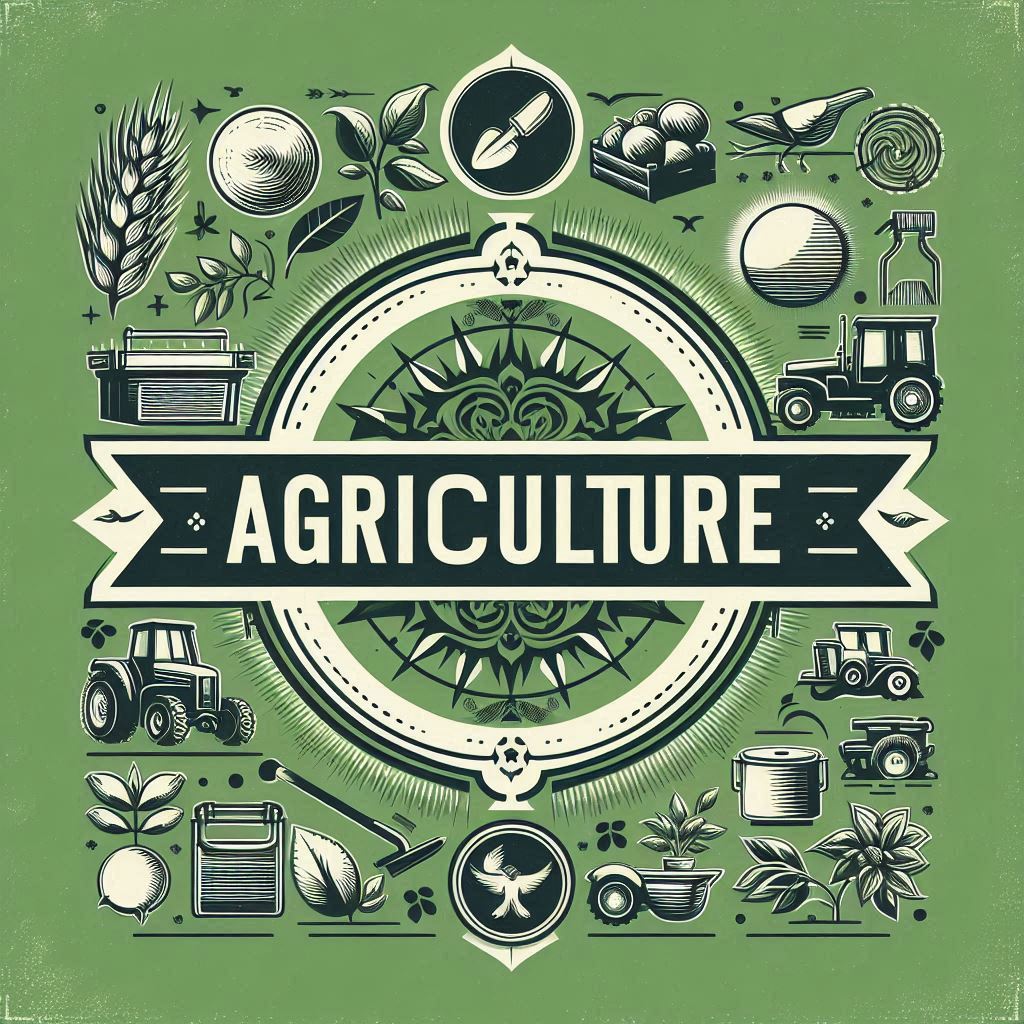Spinach has long been celebrated as a superfood, revered for its impressive nutrient profile and numerous health benefits. Rich in vitamins A, C, and K, as well as iron, magnesium, and antioxidants, spinach is often hailed as a dietary powerhouse that can bolster everything from your immune system to your skin health. It’s a versatile green that finds its way into a myriad of dishes, from refreshing green smoothies and crisp salads to hearty soups and savory stir-fries. Given its low calorie count and high nutritional value, it’s no wonder spinach is a staple in many health-conscious diets around the world.
However, despite its glowing reputation, spinach is not without its drawbacks. While it undoubtedly offers many benefits, there are also some significant reasons to exercise caution with its consumption. From potential digestive issues to interactions with certain medications, spinach can pose a variety of health risks that might make you reconsider making it a mainstay in your diet. Additionally, concerns about pesticide residues, heavy metal contamination, and its impact on conditions like kidney stones and thyroid function add layers of complexity to its otherwise stellar image. Let’s dive into the top 10 reasons why spinach might not be as perfect as it’s often portrayed and explore the potential downsides that come with this leafy green.
High Oxalate Content
Spinach is rich in oxalates, naturally occurring compounds found in many plants that play a crucial role in plant metabolism and defense. While oxalates are generally harmless in small amounts, their presence in high quantities can pose health risks, particularly for certain individuals. In the human body, oxalates can bind with minerals to form crystals. This process is especially concerning for people who are prone to kidney stones, as oxalates can combine with calcium to form calcium oxalate, the most common type of kidney stone. These stones can cause severe pain, urinary tract infections, and other complications that may require medical intervention.
For individuals with a history of kidney stones or those at high risk, such as those with a family history of stones or certain metabolic disorders, it’s particularly important to monitor oxalate intake. Spinach is one of the highest oxalate-containing foods and consuming it in large amounts can significantly increase the risk of stone formation. Furthermore, those who are on certain diets, such as a low-carb or ketogenic diet, might inadvertently increase their spinach consumption, thereby elevating their oxalate intake. To mitigate this risk, it’s advisable to balance spinach with other low-oxalate foods and ensure adequate hydration, which can help flush oxalates out of the body. Additionally, pairing spinach with calcium-rich foods like dairy can help bind oxalates in the gut, reducing their absorption and subsequent impact on kidney health.
Risk of Kidney Stones
Kidney stones are a painful and prevalent health issue, affecting millions of people worldwide. These hard deposits of minerals and salts form inside the kidneys and can cause excruciating pain as they pass through the urinary tract. One of the primary contributors to the formation of kidney stones is the presence of high levels of oxalates in the diet. Spinach, being particularly high in oxalates, can significantly exacerbate this problem. When oxalates bind with calcium in the kidneys, they form calcium oxalate crystals, which are the most common type of kidney stone. These stones can cause severe pain, blood in the urine, nausea, and frequent urination, often requiring medical intervention to manage or remove.
Studies have consistently shown a correlation between high oxalate diets and an increased risk of kidney stone development, particularly in individuals who are already susceptible due to genetic predisposition, dehydration, or certain metabolic conditions. For those who have experienced the agony of kidney stones, prevention becomes a critical aspect of managing their health. This often involves dietary modifications to reduce oxalate intake, alongside increasing fluid consumption to help flush out oxalates and other stone-forming substances from the kidneys. While spinach is undeniably nutritious, its high oxalate content means that individuals prone to kidney stones must be cautious. Incorporating alternative low-oxalate greens, such as kale or arugula, can provide similar nutritional benefits without the associated risks. Furthermore, those at risk should consider consulting a healthcare professional for personalized dietary advice to prevent the recurrence of kidney stones.
Allergic Reactions
Although rare, some individuals can develop an allergy to spinach, which can manifest in a variety of symptoms ranging from mild to severe. Spinach allergies are part of a broader category of food allergies known as oral allergy syndrome (OAS), where the immune system mistakenly identifies proteins in certain fruits and vegetables as harmful. Mild symptoms of a spinach allergy typically include oral itching, swelling of the lips, tongue, or throat, and the appearance of hives or a rash on the skin. These symptoms usually occur shortly after consuming spinach and can be managed with antihistamines and avoiding the allergen. However, even mild reactions can be uncomfortable and concerning, especially if they occur frequently.
In more severe cases, spinach allergies can lead to anaphylaxis, a life-threatening reaction that requires immediate medical attention. Symptoms of anaphylaxis include difficulty breathing, swelling of the throat, a rapid drop in blood pressure, dizziness, and loss of consciousness. This severe reaction necessitates the use of an epinephrine injector (EpiPen) and emergency medical care. If you suspect that you have a spinach allergy, it is crucial to seek testing and diagnosis from a healthcare professional, typically an allergist. They can perform specific tests, such as skin prick tests or blood tests, to confirm the allergy and help you develop an effective management plan. Avoiding spinach and being aware of potential cross-reactivity with other foods is essential for those diagnosed with this allergy. Additionally, carrying an emergency action plan and educating family and friends about your allergy can help manage and prevent severe allergic reactions.
Digestive Issues
Spinach is high in fiber, a nutrient essential for maintaining a healthy digestive system by promoting regular bowel movements and preventing constipation. The fiber in spinach is primarily insoluble, meaning it does not dissolve in water and helps add bulk to stool, facilitating its passage through the digestive tract. For many people, this aspect of spinach can contribute positively to digestive health and overall well-being. However, for individuals with sensitive stomachs or digestive disorders such as irritable bowel syndrome (IBS), the high fiber content in spinach can lead to uncomfortable symptoms. These can include gas, bloating, cramping, and general gastrointestinal discomfort, which may outweigh the potential health benefits for these individuals.
If you find that spinach causes digestive issues, there are several strategies you can employ to mitigate these effects while still enjoying its nutritional benefits. Firstly, try consuming spinach in smaller amounts to allow your digestive system to adjust gradually. Another effective method is cooking spinach, as heat can help break down some of the fibrous components, making it easier to digest. Cooking methods such as steaming, sautéing, or blanching can reduce the overall fiber content and soften the leaves, potentially alleviating digestive discomfort. Additionally, combining spinach with other low-fiber foods can help balance its effects on your digestive system. It’s also beneficial to chew spinach thoroughly to aid in the breakdown of fibers and enhance digestion. If digestive problems persist, it may be worth consulting with a healthcare professional or a dietitian to explore alternative greens that are gentler on your digestive system while still providing essential nutrients.
Pesticide Residue
Spinach is frequently listed among the “Dirty Dozen,” a list published annually by the Environmental Working Group (EWG) that identifies the fruits and vegetables with the highest pesticide residues. This is particularly concerning because spinach leaves, with their large surface area and delicate texture, are highly susceptible to absorbing and retaining these chemicals. Pesticides are used in conventional farming to protect crops from pests and diseases, but their residues can linger on the produce we consume. Over time, consuming foods with high pesticide levels can pose significant health risks. Studies have linked chronic exposure to certain pesticides to a variety of health issues, including hormone disruption, reproductive problems, neurological disorders, and an increased risk of cancer. Children, pregnant women, and individuals with compromised immune systems are particularly vulnerable to these adverse effects.
Opting for organic spinach can be an effective way to reduce exposure to these harmful chemicals. Organic farming practices prohibit the use of synthetic pesticides and fertilizers, relying instead on natural methods for pest control and soil enrichment. While organic spinach may still contain some pesticide residues due to environmental contamination, the levels are generally much lower compared to conventionally grown spinach.
Additionally, organic spinach often has a higher nutritional profile, as organic farming practices can enhance soil health and, consequently, the nutrient content of the produce. Washing spinach thoroughly under running water, using a vegetable brush, or soaking it in a vinegar solution can further reduce pesticide residues. Choosing organic spinach and practicing diligent cleaning methods can significantly decrease your intake of harmful chemicals, contributing to better long-term health and well-being.
Thyroid Function Interference
Spinach contains goitrogens, naturally occurring compounds found in various cruciferous vegetables and some leafy greens, including spinach. Goitrogens can interfere with thyroid function by inhibiting the uptake of iodine, an essential mineral required for the production of thyroid hormones. These hormones are crucial for regulating metabolism, energy levels, and overall hormonal balance. When iodine uptake is hindered, it can lead to an enlarged thyroid gland, known as a goiter, and other thyroid-related issues. This interference is particularly concerning for individuals with existing thyroid conditions, such as hypothyroidism, where the thyroid gland is already underactive and unable to produce sufficient hormones. For these individuals, consuming high-goitrogen foods like spinach can exacerbate their condition, leading to symptoms like fatigue, weight gain, and cold intolerance.
Cooking spinach can significantly reduce its goitrogen content, as heat helps to deactivate these compounds. Methods such as steaming, boiling, or sautéing can make spinach safer for those concerned about thyroid health. However, even with cooking, it is advisable for individuals with thyroid issues to consume spinach in moderation. Incorporating a variety of vegetables into the diet can help balance nutrient intake without overloading on goitrogens.
Additionally, ensuring adequate iodine intake through dietary sources such as iodized salt, dairy products, and seafood can help mitigate the effects of goitrogens. For those with thyroid conditions, it is essential to consult with a healthcare provider or a dietitian to develop a balanced diet plan that supports thyroid health while still allowing for the enjoyment of nutrient-rich vegetables like spinach.
Interaction with Blood Thinners
Spinach is renowned for its exceptionally high vitamin K content, a vital nutrient essential for blood clotting. While adequate vitamin K is crucial for maintaining healthy blood coagulation processes, it can pose challenges for individuals taking anticoagulant medications such as warfarin. These medications work by inhibiting vitamin K-dependent clotting factors to prevent excessive blood clot formation. However, consuming large quantities of spinach, which is rich in vitamin K, can potentially counteract the effects of these blood thinners. This interference arises because an increase in dietary vitamin K can enhance the clotting factors’ production, thus diminishing the medication’s ability to effectively thin the blood.
For those managing their health with blood thinners, including warfarin, it becomes paramount to carefully monitor their spinach consumption. Healthcare providers often recommend maintaining a consistent intake of vitamin K to ensure the medication’s efficacy remains stable. This involves being mindful of how much spinach and other vitamin K-rich foods are consumed daily. Consulting with a doctor or a registered dietitian can provide personalized guidance on balancing dietary vitamin K intake while effectively managing anticoagulation therapy. By maintaining open communication and staying informed, individuals can better navigate the complexities of managing their health while enjoying a balanced diet inclusive of spinach.
Potential for Foodborne Illnesses
Spinach, despite its nutritional benefits, has been associated with multiple instances of foodborne illnesses, particularly outbreaks involving pathogens like E. coli and Salmonella. These bacteria can contaminate spinach during various stages of production and distribution, leading to potentially severe health consequences when consumed. Symptoms of infections caused by these pathogens range from mild gastrointestinal discomfort, such as diarrhea and abdominal cramps, to more severe complications like kidney failure or bloodstream infections, especially among vulnerable populations such as children, elderly individuals, and those with weakened immune systems.
To mitigate the risk of contamination, it is crucial to handle and prepare spinach with care. Thoroughly washing fresh spinach under cool, running water can help remove any surface bacteria. Additionally, opting for spinach sourced from reputable suppliers and adhering to proper food safety practices can further reduce the likelihood of exposure to harmful pathogens. Cooking spinach thoroughly can also kill any potential bacteria present, ensuring safer consumption. By staying vigilant and informed about food safety measures related to spinach and other leafy greens, individuals can enjoy its nutritional benefits while minimizing the risk of foodborne illnesses.
Iron Absorption Issues
Spinach is frequently praised for its iron content, although it’s important to note that the type of iron it provides is non-heme iron, which differs from the heme iron found in animal products. Non-heme iron is not as readily absorbed by the body compared to heme iron. Furthermore, spinach contains oxalates, compounds that can bind to iron in the digestive tract, forming complexes that hinder its absorption into the bloodstream. This combination of factors makes the iron in spinach less bioavailable than that from animal sources.
To optimize iron absorption from spinach, it’s beneficial to pair it with foods rich in vitamin C. Vitamin C enhances non-heme iron absorption by converting it into a more soluble form that the body can absorb more efficiently. Examples of vitamin C-rich foods include citrus fruits like oranges or grapefruits, bell peppers, strawberries, and tomatoes. Combining spinach with these vitamin C sources in meals or salads can significantly boost the amount of iron your body absorbs from spinach, thereby maximizing its nutritional benefits. Additionally, cooking spinach can help reduce its oxalate content slightly, potentially improving iron absorption compared to consuming it raw.
Risk of Heavy Metal Contamination
Spinach, known for its ability to absorb minerals from the soil, also has a propensity to accumulate heavy metals such as cadmium and lead, particularly when cultivated in soils contaminated with these substances. Exposure to these heavy metals through spinach consumption poses significant health risks. Cadmium, for instance, is a toxic metal that accumulates in the kidneys over time, potentially leading to kidney damage and impaired kidney function. Lead, another heavy metal, can adversely affect multiple organs, including the brain, kidneys, and nervous system, especially harmful to children and pregnant women.
To mitigate the risk of heavy metal exposure from spinach, it is advisable to opt for spinach sourced from reputable organic farms that adhere to stringent environmental and agricultural regulations. Organic farming practices typically reduce the likelihood of soil contamination with heavy metals compared to conventional farming methods that may involve the use of chemical fertilizers and pesticides containing these toxic substances. Furthermore, moderation is key; while spinach offers nutritional benefits, consuming excessive amounts may inadvertently increase the intake of heavy metals. By practicing moderation and selecting spinach from trusted sources, individuals can enjoy its healthful qualities while minimizing potential risks associated with heavy metal contamination.
High Purine Content
Spinach is relatively high in purines, naturally occurring compounds found in many foods that the body breaks down into uric acid. Normally, uric acid is dissolved in the blood and eliminated through the kidneys. However, when uric acid levels become excessively high, either due to overproduction or under-excretion, it can crystallize and deposit in the joints, leading to gout. Gout is a form of arthritis characterized by sudden, severe attacks of pain, redness, and swelling in the affected joints, often the big toe. These painful episodes can significantly impair mobility and quality of life.
For individuals prone to gout or those with elevated uric acid levels, managing dietary intake of purines is crucial. Spinach, being purine-rich, can contribute to increased uric acid levels and potentially trigger gout attacks. Therefore, it is advisable for such individuals to limit their consumption of spinach and other high-purine foods, such as red meat, shellfish, and certain legumes. Instead, they should focus on a diet rich in low-purine foods like fruits, vegetables (excluding high-purine ones like spinach and asparagus), whole grains, and low-fat dairy products. Additionally, staying well-hydrated and maintaining a healthy weight can help manage uric acid levels and reduce the risk of gout flare-ups. Consulting with a healthcare provider or a dietitian can provide personalized dietary recommendations to effectively manage gout and maintain overall health.
Possible Nitrate Issues
Spinach, like many leafy greens, can contain elevated levels of nitrates, which are compounds naturally present in soil and absorbed by plants during growth. While nitrates themselves are generally considered harmless, they can convert into nitrites and subsequently nitrosamines under certain conditions, particularly in environments with high heat or acidity, such as the acidic environment of the stomach. Nitrosamines are potentially harmful compounds that have been linked to an increased risk of certain cancers.
This concern is particularly relevant for vulnerable populations such as infants and pregnant women. Infants, due to their developing digestive systems and lower levels of stomach acid, are more susceptible to nitrite formation from nitrates in foods like spinach. Pregnant women also need to be cautious, as nitrosamines can potentially cross the placenta and affect fetal development. To minimize the risk of nitrosamine formation, it is advisable to avoid storing cooked spinach for extended periods, as this can promote the conversion of nitrates into nitrites. Instead, consume spinach fresh and ensure it is properly washed to reduce nitrate levels before cooking or eating. By adopting these practices, individuals can enjoy the nutritional benefits of spinach while minimizing potential risks associated with nitrate consumption.
Environmental Impact
The cultivation of spinach, while providing valuable nutrition, also carries significant environmental considerations. Spinach farming typically requires substantial amounts of water for irrigation, especially in regions where water resources are already stressed. Excessive water usage in agriculture can contribute to water scarcity and environmental strain. Furthermore, the application of pesticides and fertilizers in conventional spinach farming practices can pose risks to soil health and nearby ecosystems. Pesticides, in particular, may affect non-target organisms and pollinators, further impacting biodiversity.
Moreover, continuous monoculture of spinach can lead to soil depletion, as the crop extracts essential nutrients without adequate replenishment. This can degrade soil quality over time, reducing its fertility and resilience to withstand environmental stresses. Considering alternative greens like kale or Swiss chard can offer a more sustainable choice. These greens often require fewer pesticides and less water for cultivation compared to spinach. Additionally, their cultivation can promote crop rotation and diverse farming practices that help maintain soil health and biodiversity. By exploring these alternatives, individuals can contribute to sustainable agriculture practices and reduce the environmental footprint associated with their dietary choices.
Conclusion
While spinach offers numerous health benefits, it’s important to recognize and address its potential drawbacks. The high oxalate content in spinach can increase the risk of kidney stone formation for susceptible individuals, highlighting the need for moderation in consumption. Additionally, concerns about pesticide residues and their potential health impacts underscore the importance of sourcing spinach from organic and reputable sources whenever possible. Furthermore, spinach’s goitrogen content can interfere with thyroid function in vulnerable individuals, necessitating caution for those with thyroid disorders.
Nevertheless, incorporating spinach into a balanced diet can still be beneficial. Its rich array of vitamins, minerals, and antioxidants contributes to overall health and wellbeing. To enjoy spinach safely, consider cooking methods that can reduce oxalate content and improve nutrient absorption. Pairing spinach with vitamin C-rich foods can enhance iron absorption and mitigate some of the challenges associated with its non-heme iron. Moreover, exploring alternatives like kale or Swiss chard can offer similar nutritional benefits with potentially lower environmental impacts.
Ultimately, making informed dietary choices involves understanding both the benefits and risks associated with foods like spinach. By practicing moderation, choosing quality sources, and being aware of individual health considerations, individuals can continue to enjoy the nutritional advantages of spinach while minimizing potential downsides. This approach ensures a balanced diet that supports long-term health and wellbeing.
FAQs Frequently Asked Questions (Frequently Asked Questions)
Q1: Can cooking spinach reduce its oxalate content?
A1: Yes, cooking spinach can reduce its oxalate content, making it safer for those prone to kidney stones or oxalate-related issues.
Q2: Is frozen spinach better than fresh spinach?
A2: Both have their pros and cons. Frozen spinach is often blanched before freezing, which can reduce pesticide residues and oxalate levels. Fresh spinach, however, tends to retain more nutrients if consumed shortly after harvest.
Q3: How can I reduce the pesticide residue on spinach?
A3: Washing spinach thoroughly under running water and using a vegetable brush can help reduce pesticide residues. Opting for organic spinach is another effective way to minimize exposure.
Q4: Are there any safer alternatives to spinach?
A4: Yes, alternatives like kale, Swiss chard, and arugula offer similar nutritional benefits without some of the downsides associated with spinach.
Q5: What should I do if I experience digestive issues after eating spinach?
A5: If spinach causes digestive discomfort, try consuming it in smaller amounts, cooking it to reduce fiber content, or opting for other leafy greens that are easier on your stomach.
Q6: How does spinach affect iron absorption?
A6: Spinach contains non-heme iron, which is less readily absorbed by the body compared to heme iron found in animal products. The oxalates in spinach can further inhibit iron absorption. Consuming vitamin C-rich foods alongside spinach can help enhance iron absorption.
Q7: Is organic spinach less likely to contain heavy metals?
A7: Organic spinach is generally grown in soil that is less likely to be contaminated with heavy metals. However, it’s still important to source your spinach from reputable farms and consume it in moderation to minimize any potential risks.
Q8: Can spinach consumption interfere with medications other than blood thinners?
A8: Besides blood thinners, spinach can interact with certain medications due to its high vitamin K content and other compounds. It’s always a good idea to consult with a healthcare provider about your diet if you are taking prescription medications.
Q9: How can I tell if I’m allergic to spinach?
A9: Common signs of a spinach allergy include itching, swelling, hives, and gastrointestinal discomfort. Severe reactions, such as difficulty breathing, require immediate medical attention. If you suspect an allergy, consult with an allergist for proper testing and guidance.
Q10: What are the symptoms of a thyroid problem caused by goitrogens in spinach?
A10: Symptoms of thyroid issues caused by goitrogens include fatigue, weight gain, cold intolerance, and depression. If you have a thyroid condition, it’s important to monitor your intake of goitrogenic foods like spinach and consult with a healthcare provider for personalized advice.



































